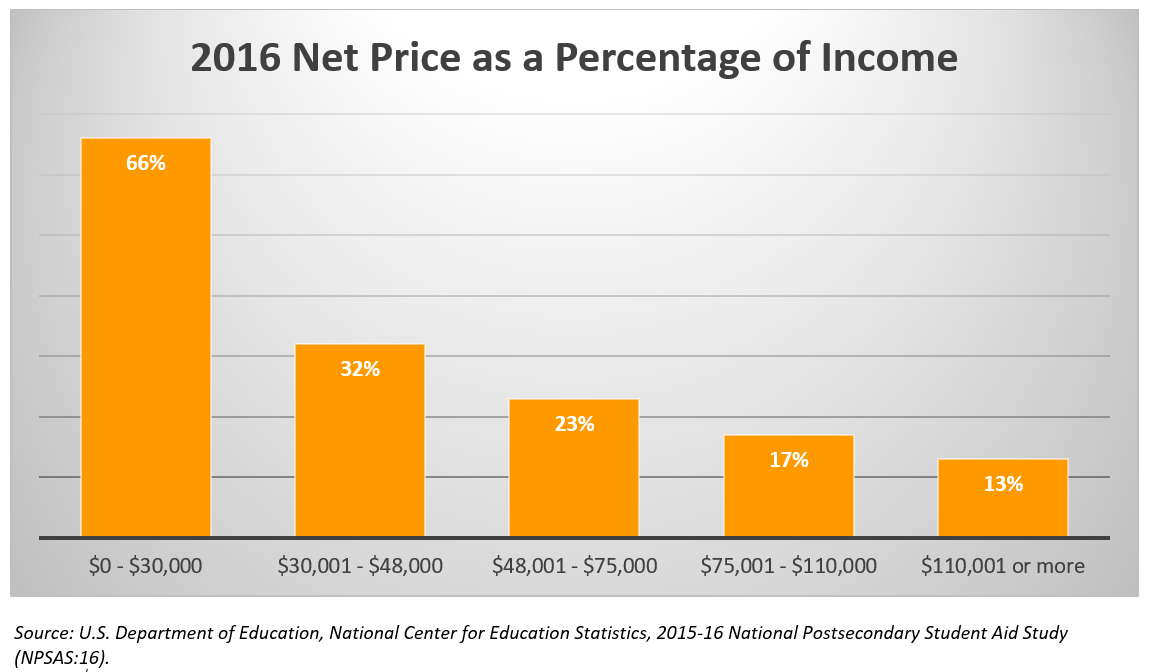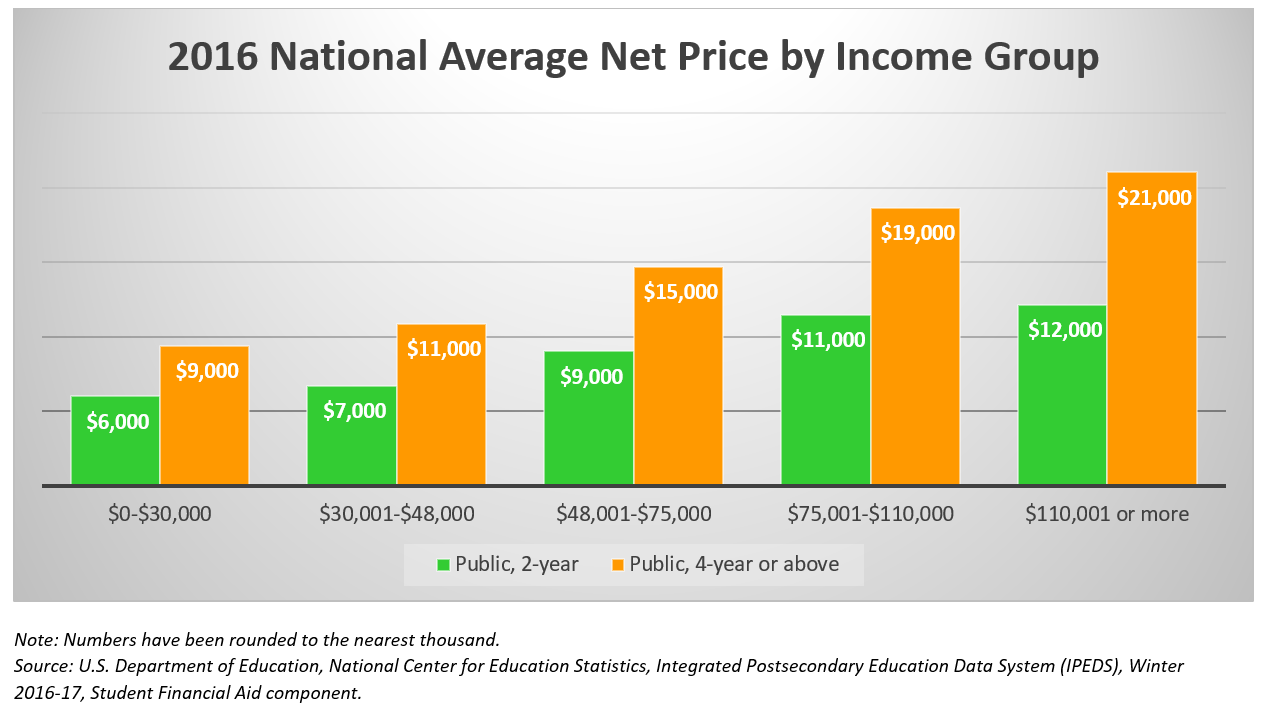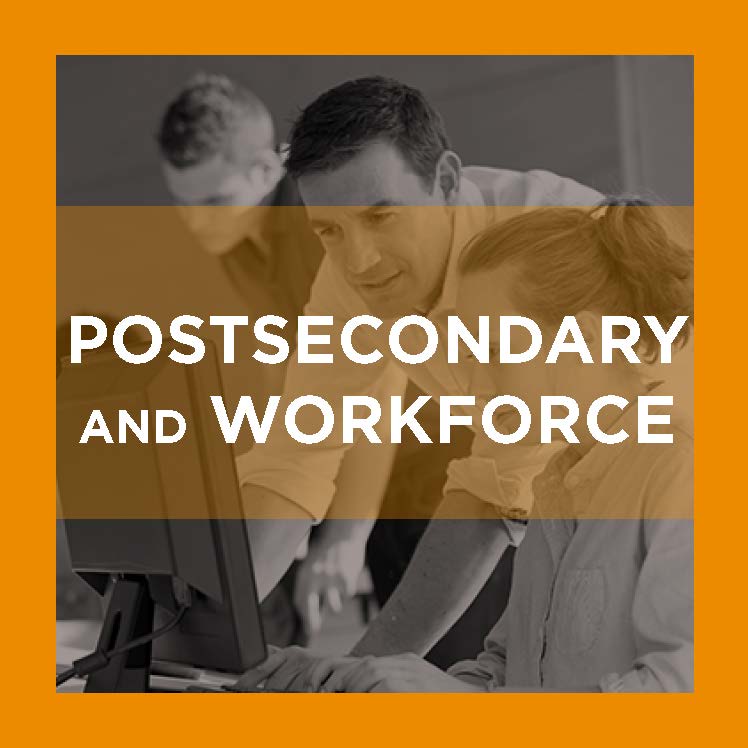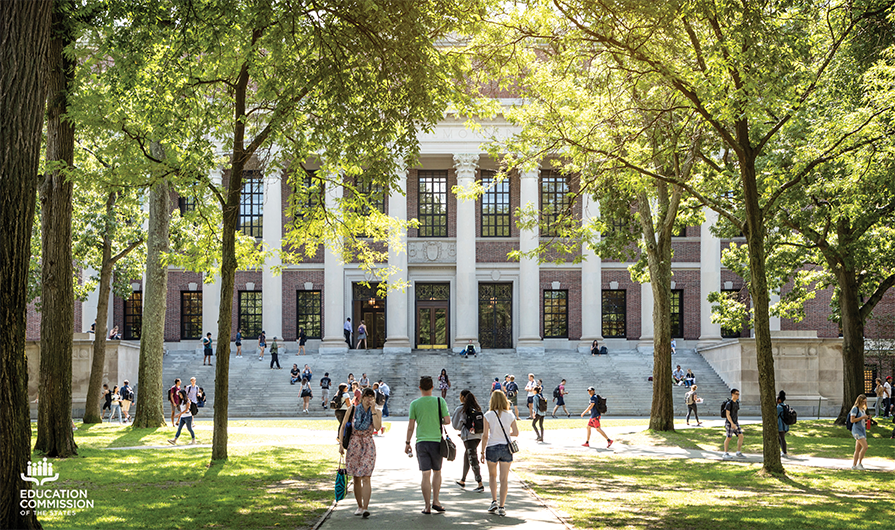With lots of information out there on college affordability — or un-affordability, depending on what you are reading — we wondered how net price and median income could help us learn about affordability for students from differing economic backgrounds. We wanted to know: Is the cost of college, after financial aid, a reasonable amount to expect students to pay?
We found a few things going on with net price and median household income that demonstrate a disproportionate financial burden for low-income students. First, there appears to be an incremental increase in net price across income groups, yet there are larger gains in median incomes across those same groups. This means that college net price requires more financial effort on the part of low-income families than for high-income families. Next, we noticed that the initial net price for the lowest-income group appears to be particularly steep when compared with the increases in net price that occur between income groups — creating a greater financial burden for students with the fewest financial resources.
This disproportionate burden is seen most clearly when looking at net price as a percentage of household income. For students from households with incomes up to $30,000, paying net price requires 66 percent of their income. For students from households with incomes between $30,001 and $48,000, net price is roughly one-third of their income.

Increases in median income for the five income groups account for some of the trend we see in net price as a percentage of income between groups. This is because as median incomes increase between income groups, net price also increases — but not as significantly. Median income for a household earning up to $30,000 is about $12,000 and jumps to $38,000 for a household earning between $30,001 and $48,000.
And as you go up the income scale, net price increases only incrementally between these income groups. For example, the increase in net price between the two lowest-income groups is about $1,000 at a public two-year institution and about $2,000 at a public four-year institution. Similar incremental increases in net price occur between all income groups and across both two-year and four-year institutional sectors.
Further, the net price increase between income groups is never as significant as the values represented as initial net price going from zero dollars to $6,000 for a 2-year institution or zero to $9,000 for a 4-year institution. This burden can be thought of as a pricing floor for college and students with the lowest incomes are absorbing that pricing floor.

While our analysis is limited by working with averages at a national level, there are some important trends that policymakers can consider when thinking about college affordability. To achieve equitable access to college, need-based aid and aid that goes beyond just the cost of tuition and fees should be key elements of any financial aid program.
Curious what net price and median income looks like in your state? Choose your state from the map:
Caveats: Our analysis uses the most recently available data which is for 2016 and relies on averages and medians for net price and incomes for the country as a whole and only looks at public institutions. Such a method should always be interpreted with caution as it cannot account for demographic and geographic differences and may not reflect the effects of the most recently implemented policies. Nonetheless, this information is a helpful demonstration for policymakers and administrators where affordability in terms of net price, falls across different income groups.








